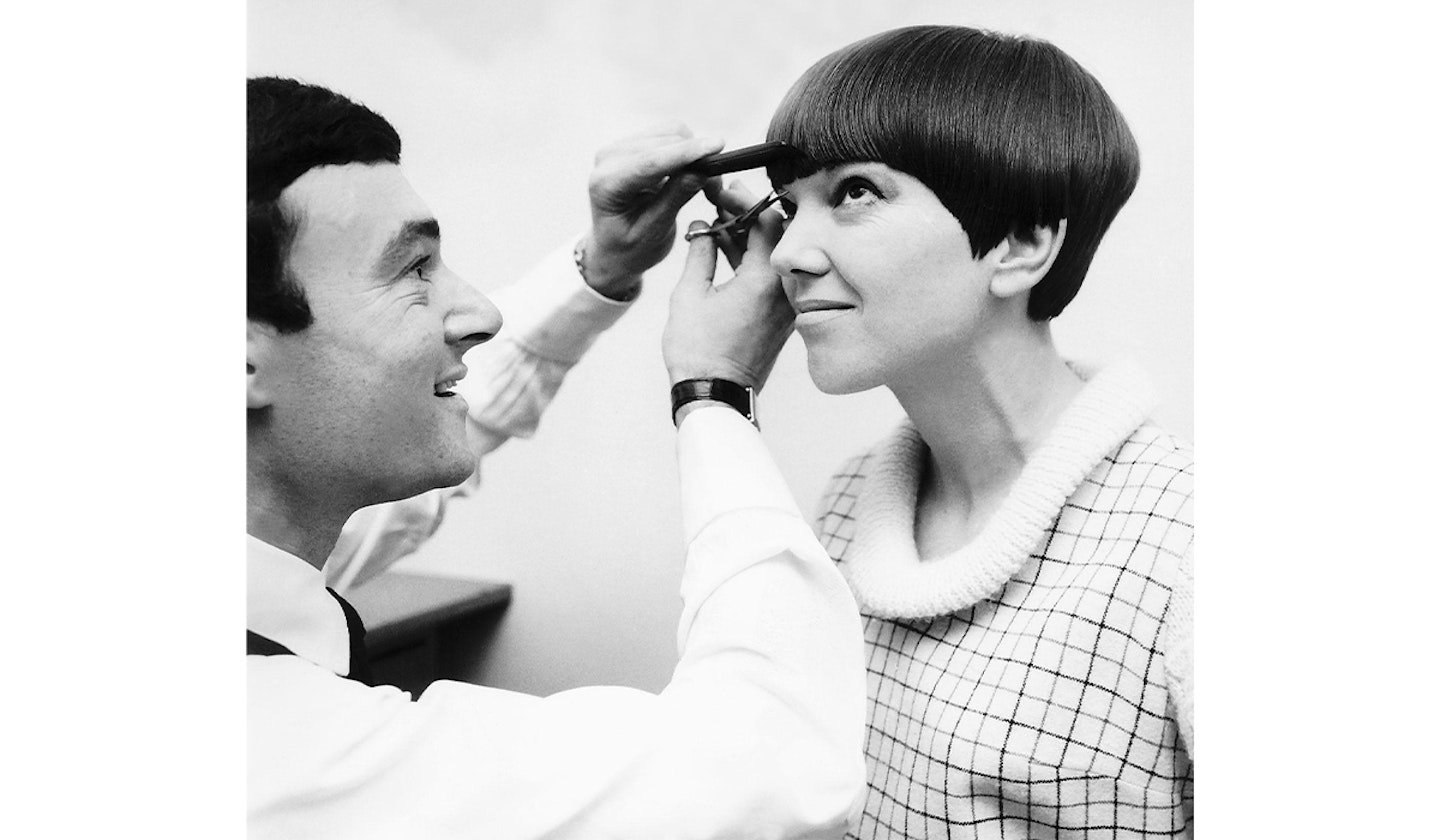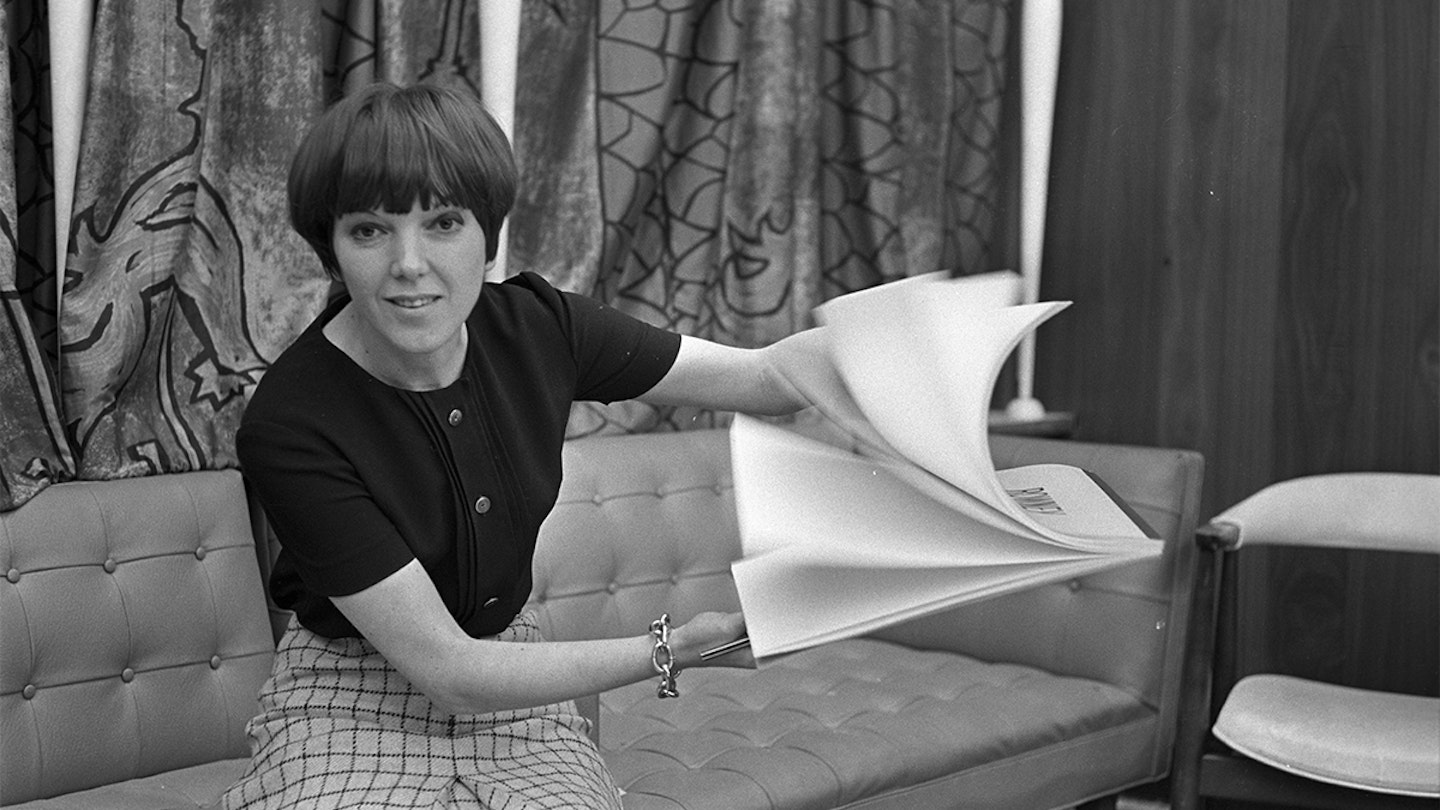She was the trailblazing fashion designer whose revolutionary look was epitomised in the trendy set of London’s King’s Road and the iconic images of models Twiggy and Jean Shrimpton looking impossibly cool in a mini skirt. But unlike many designers before her and since, Mary Quant not only changed the clothes of the richest and trendiest models and celebrities, but her influence crept into the wardrobe of Sixties’ girls everywhere, revolutionising fashion all over the country, whether you were a top star or just an ordinary girl.
Her innovations were cutting- edge but familiar and accessible enough to appeal to women of every shape, size and background. We were enchanted by her promise of something totally new, unlike the fusty fashions of our parents’ generation. So Mary Quant waved her magic wand over our wardrobes, redefining a whole generation with her unique style.
Mary's early years

Born and raised in Blackheath, the daughter of schoolteachers, Mary’s parents were dead set against her going into fashion design. Instead she studied illustration at Goldsmiths before taking an apprenticeship in millinery and later opening a restaurant with her husband on the King’s Road, as well as a boutique called Bazaar on the ground floor.
Mary planned to fill Bazaar with wholesale stock, but finding she liked none of the clothes available, she started making them herself. She was entirely self-taught, helped along by evening classes where she learned how to adapt mass-market printed patterns to get the looks she was after and create clothes that she’d want to wear herself.
In the early days with little money it was very much hand-to-mouth as she would wait for the sales from one day to buy material to make the next day’s stock overnight. Although exhausting, this cottage industry approach meant the rails of Bazaar were continually refreshed with short runs of new designs, regularly giving unique looks at alarmingly competitive prices.
Once her London boutique was booming, in 1963 Mary expanded into the UK mass market with a new cheaper line called the Ginger Group, opening up her style to even more women.
By the end of the decade she was the UK’s most high- profile designer. She remained an icon of the fashion world and was recognised as a Dame in 2015.
Mary Quant and the mini skirt
After decades of being told to cover our knees, suddenly they were exposed to fresh air as Mary Quant helped herald in the era-defining mini skirt. While there’s no doubt shortening hemlines had been on the rise throughout the late Fifties and other designers raised their profile, Mary is credited with taking mini-skirts to a whole new level. And it wasn’t just skirts that went north. Mary’s simple shift dresses – modelled on a schoolgirl pinafore dress – also suited a shorter hemline, meaning we had a whole range of different ways we could show off our legs and drive disapproving parents to despair.

Fashionable and functional designs
While our mums and dads dressed to be practical, Mary was instrumental in helping us see clothes as something that could be playful, fun and fit for purpose in a changing modern world. Yes, hot pants weren’t great for housework, but Mary’s tight-fitting shorts made us feel great and were far more practical for a generation of girls getting on with the important business of dancing rather than scrubbing the kitchen sink. Tights brought another change in the tide. Previously, stockings held up by garters and suspender belts had been the only option.
But Mary created a range of proper tights that didn’t just keep your legs warm but were fun, bright colours such as mustard yellow, scarlet and gold. Then there was PVC – at the time only used in practical outdoor wear – with which she made a whole range of ‘wet look’ clothes and boots. Striking to look at and handy in a rainstorm, too!
Her jersey pullover and skinny rib sweater, inspired by children’s clothes, also brought a sense of childish fun to our wardrobes that were easier to wear than some of the restraining outfits we women had been told to dress in before. And child’s play hugely influenced her make-up range which was like a children’s art box of crayons and brushes that made bold, fizzing colours for the face and had names such as ‘blushbaby’, ‘cherry pop’ and ‘jeepers peepers’.
Her designs released women from the fashion rules that had often restricted them as she joined a larger movement of women’s liberation going on throughout the Sixties. Possibly one of her biggest contributions to this was making trousers suitable and acceptable womenswear, freeing girls all over from the impracticalities of skirts to offer a range of pretty trousers we could wear for any occasion.
